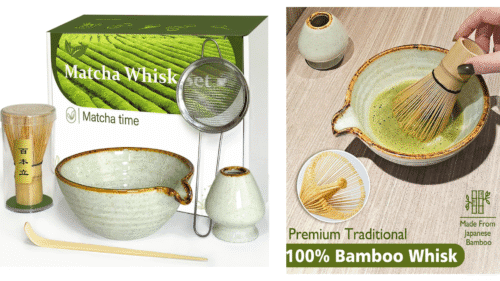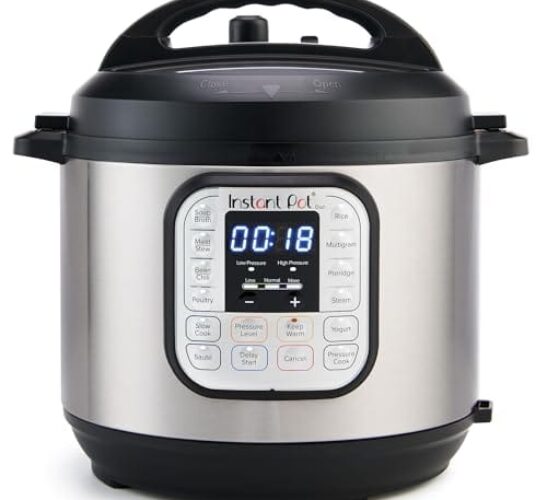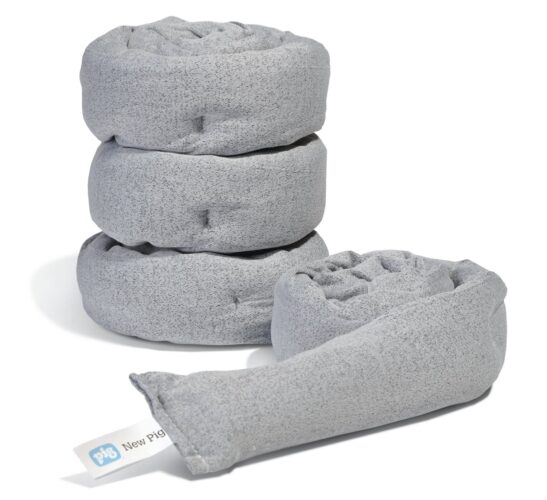If you love matcha tea, you’ve probably seen the traditional bamboo matcha whisk, also known as a chasen. This unique tool is an important part of making authentic Japanese matcha with the right smooth and frothy texture.
In this complete guide, you’ll learn:
- What a matcha whisk is and why it’s important
- How to use a chasen step by step
- The different types of matcha whisks
- How to care for and clean your whisk
- The best matcha whisk sets for beginners
- Common questions people ask about matcha whisks
By the end, you’ll know exactly how to prepare matcha the Japanese way.

What is a Matcha Whisk (Chasen)?
A matcha whisk is a traditional tool made from bamboo. It has many thin prongs designed to mix matcha powder with hot water. When you whisk correctly, it creates a creamy foam on top of the tea.
In Japanese culture, this tool is called a chasen. It has been used for hundreds of years in the Japanese tea ceremony.
Without a whisk, your matcha may turn out clumpy, bitter, or flat. With a whisk, it becomes smooth, balanced, and delicious.
Why Do You Need a Matcha Whisk for Matcha Tea?
Some beginners wonder: Can I just use a spoon or an electric frother?
While those can help, the bamboo whisk is special. Here’s why:
- ✅ It blends matcha powder evenly (no lumps).
- ✅ It makes the perfect froth on top.
- ✅ It helps release the natural sweetness of matcha.
- ✅ It’s part of the Japanese tea tradition.
- ✅ It gives you a mindful, calming tea-making ritual.
How to Use a Matcha Whisk Step by Step
Using a matcha whisk is simple once you know the method. Here’s how to do it:
Step 1: Prepare Your Matcha Bowl
Add 1–2 scoops of matcha powder (about 1–2 grams) into your matcha bowl (chawan).
Step 2: Add Hot Water
Pour in a small amount of hot water (about 70–80 ml). The water should be warm (80°C / 175°F), not boiling.
Step 3: Start Whisking
Hold the bamboo whisk upright. Whisk quickly in a “M” or “W” motion instead of circles. This movement helps create foam.
Step 4: Make Froth
Keep whisking until you see tiny bubbles forming on the surface. The tea should look creamy and smooth.
Step 5: Add More Water (Optional)
If you like lighter tea, add more hot water after whisking. For stronger tea, keep it concentrated.
Types of Matcha Whisks (Chasen)
Not all matcha whisks are the same. Different types are made for different styles of matcha.
1. 80-Prong Chasen
- Best for everyday matcha
- Good balance between froth and smoothness
2. 100-Prong Chasen
- Creates more foam
- Perfect for thin tea (Usucha)
3. 120-Prong Chasen
- Very fine whisk
- Used for formal tea ceremonies
4. Thicker-Prong Chasen
- Used for thick tea (Koicha)
- Makes less foam but blends well
How to Take Care of Your Matcha Whisk
Your chasen whisk can last for months if you take care of it properly. Follow these tips:
- Soak in warm water before use to soften prongs.
- Rinse only with water (never soap).
- Dry on a whisk holder (kusenaoshi) to keep its shape.
- Avoid leaving it wet this can cause mold.
- Replace it when prongs start breaking or bending too much.
Best Matcha Whisk Sets
If you are new to matcha, it’s best to buy a matcha set. These sets usually include:
- A bamboo whisk (chasen)
- A bamboo scoop (chashaku)
- A ceramic bowl (chawan)
- A whisk holder (kusenaoshi)
With these tools, you’ll have everything needed to make authentic Japanese matcha at home.
Matcha Whisk vs. Electric Frother
Some people ask: Which is better, a matcha whisk or an electric frother?
- Matcha Whisk (Chasen): Traditional, authentic, creates natural froth, and gives you a calming tea-making ritual.
- Electric Frother: Quick, easy, and portable, but sometimes makes large bubbles instead of smooth foam.
Frequently Asked Questions (FAQ)
1: What is a matcha whisk (chasen) used for?
A matcha whisk is used to blend matcha powder with hot water. It removes clumps and creates the frothy foam that makes matcha smooth and creamy.
2: Can I use a spoon or fork instead of a whisk?
No, a spoon or fork cannot properly mix matcha. They leave lumps and no foam. A bamboo whisk is the best tool for smooth, authentic matcha.
3: Can I clean my whisk with soap?
No, never use soap. Just rinse with warm water and let it air dry on a whisk holder. Soap can damage the bamboo and leave a bad taste.
4: How often should I replace a matcha whisk?
With proper care, a chasen whisk lasts about 2–6 months. If the prongs break or lose shape, it’s time to buy a new one.
5: Do I really need a whisk holder?
Yes. A whisk holder (kusenaoshi) helps your whisk keep its shape and prevents mold. It also makes the whisk last longer.
6: What’s the best whisk for beginners?
The 80-prong bamboo chasen is the best choice for beginners. It’s easy to use and makes both smooth and frothy matcha. more product







